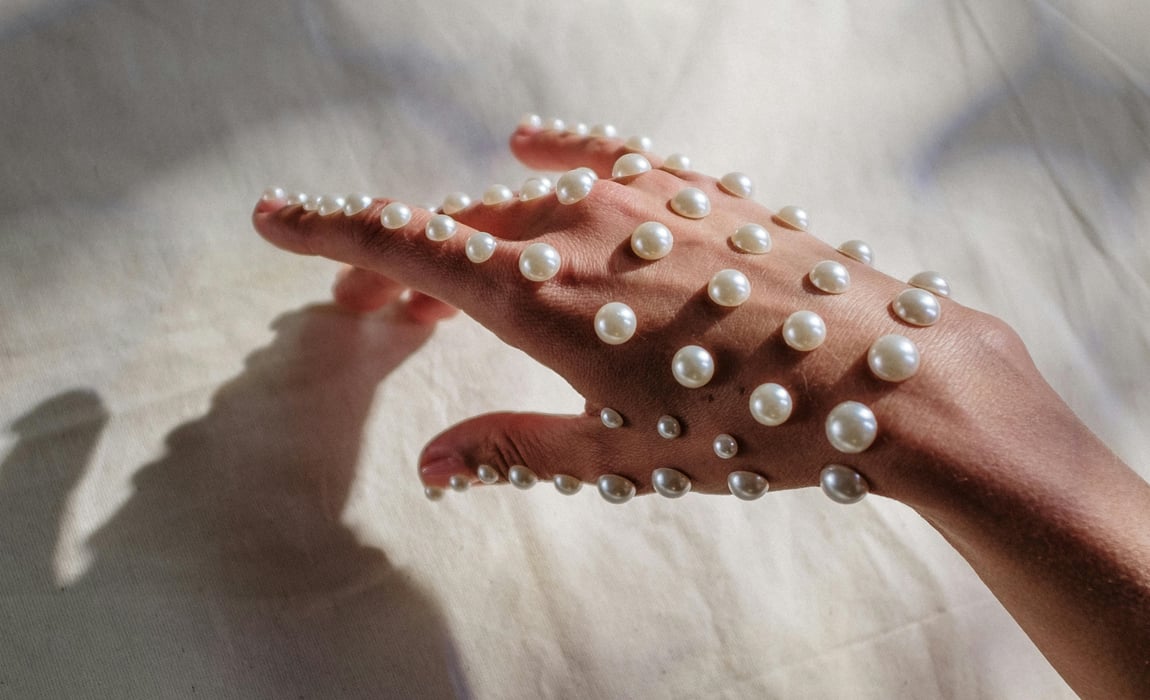Pearls are unique among gemstones as they are produced by living organisms. They are formed inside the shells of certain mollusks, primarily oysters and mussels, when an irritant such as a grain of sand becomes trapped inside. The mollusk secretes layers of nacre around the irritant, eventually forming a pearl. Depending on the environment, pearls can be either freshwater or saltwater, each type possessing distinct characteristics and charm.
Freshwater Pearls – origin: China
These pearls are cultivated in freshwater rivers and lakes and are known for their wide variety of shapes, sizes (2mm to 15mm), and colors such as white, pink, lavender, and peach. They are generally more affordable than their saltwater counterparts.
Akoya Pearls – origin: China and Japan
Known for their high luster and near-perfect round shape, Akoya pearls are usually white or cream-colored with overtones of rose, silver, or ivory. Read more about Akoya pearls here.
Tahitian Pearls – origin: Tahiti
Often referred to as black pearls, Tahitian pearls come in a spectrum of dark hues including black, gray, green, blue, and purple.
South Sea Pearls – origin: Australia, Indonesia, Philippines
These are among the largest and most valuable pearls, ranging from 9mm to 20mm. They are renowned for their thick nacre, satin luster, and colors that span white, silver, and gold.
Mabe Pearls – origin: Australia and Japan
Growing against the inside shell of the oyster, these are hemispherical in shape, making them ideal for earrings and rings due to their flat back.
Keshi Pearls – origin: Japan and French Polynesia
Keshi pearls are unique, forming without a nucleus, resulting in irregular, often baroque shapes. They are known for their exceptional luster and come in various colors and sizes.
Cultured Freshwater Pearls – origin: primarily in China, Japan, and the United States
Unlike natural pearls, which form without human intervention, cultured pearls are produced by inserting a small piece of mantle tissue or a bead into the mussel to stimulate pearl formation. This process is carried out in controlled environments such as freshwater lakes, rivers, and ponds.

Leave A Comment